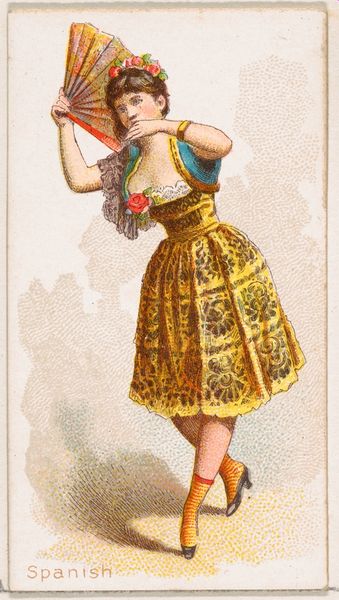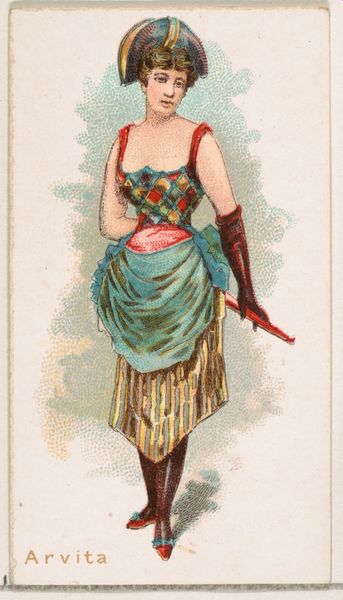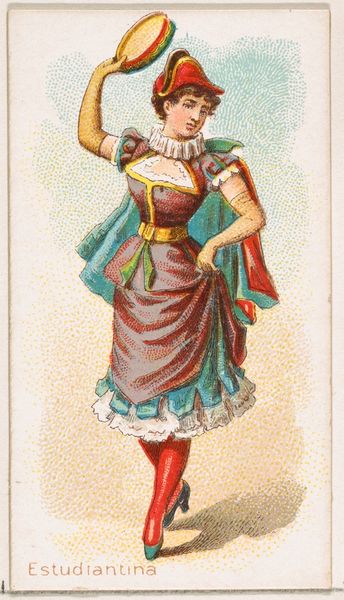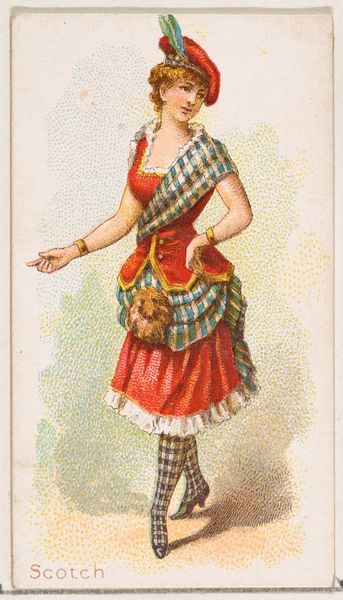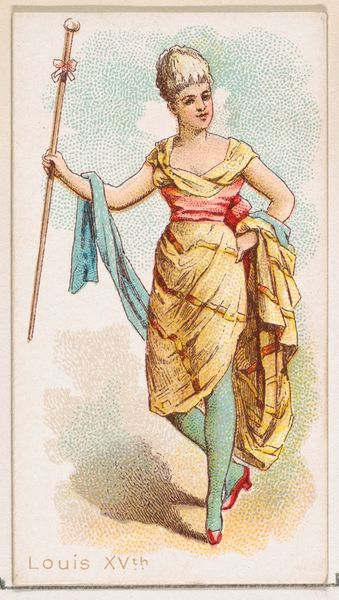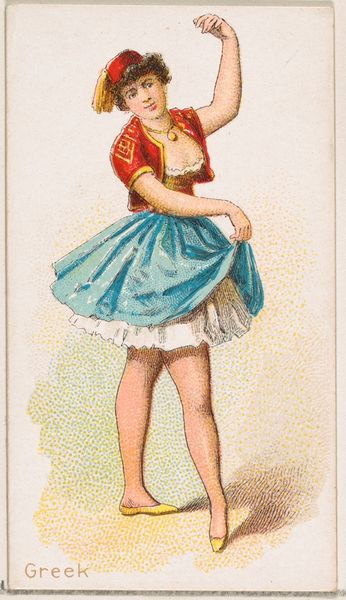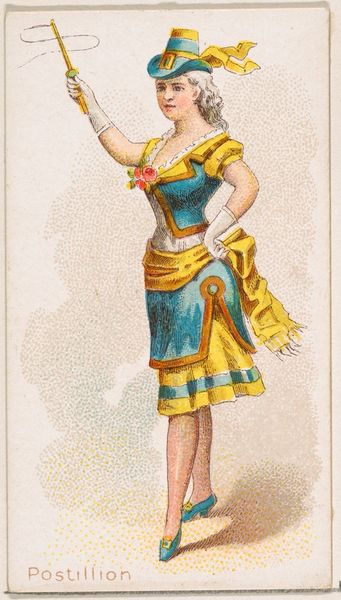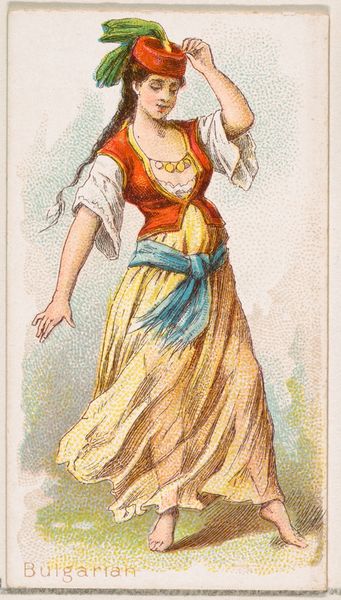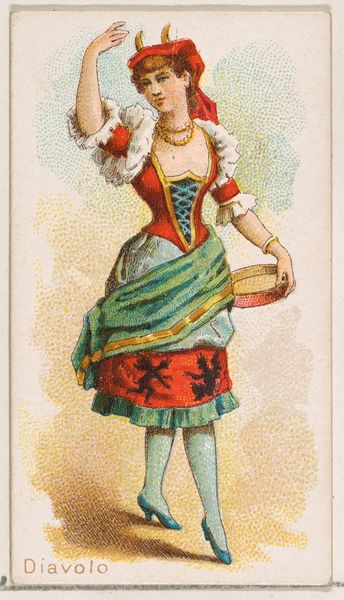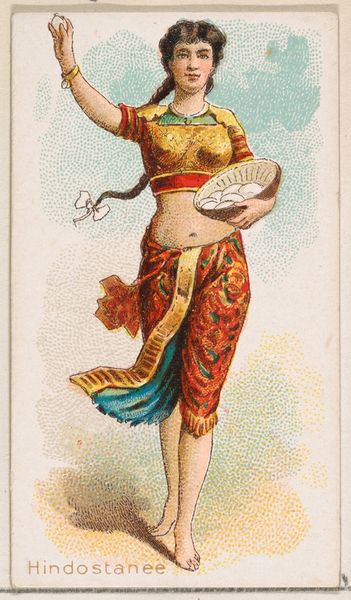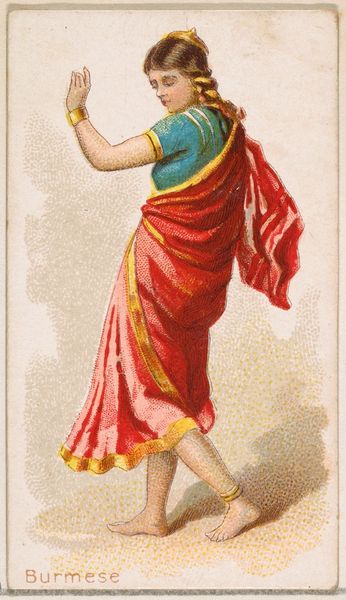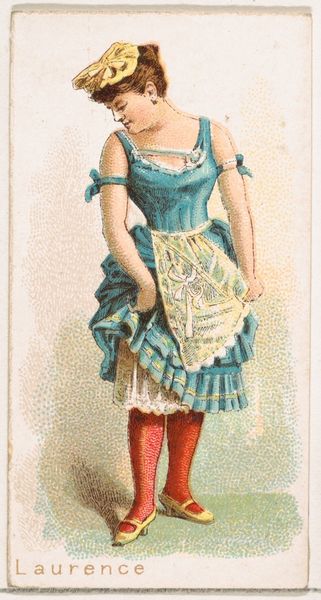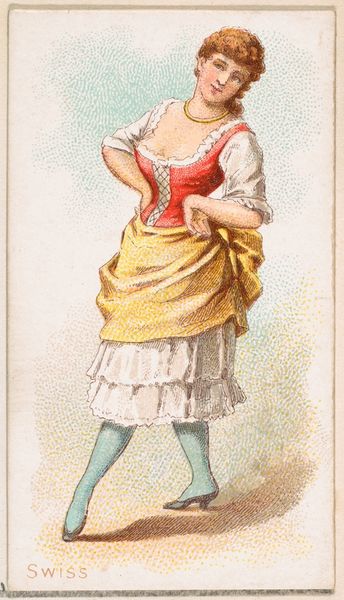
Algerian Dancer, from the Dancing Women series (N186) issued by Wm. S. Kimball & Co. 1889
0:00
0:00
Dimensions: Sheet: 2 11/16 × 1 7/16 in. (6.9 × 3.7 cm)
Copyright: Public Domain
Editor: This is "Algerian Dancer" from the Dancing Women series, created around 1889 by William S. Kimball & Co., employing colored pencils and print techniques. I’m immediately drawn to the bright colors and the somewhat… caricatured depiction. What can you tell me about this piece? Curator: This print is a product of its time, deeply embedded in the economic and social structures of late 19th-century America. These cards, distributed with tobacco products, were essentially commodities. Consider the process: from the sourcing of materials like paper and inks, to the labor involved in creating the image and mass printing it. It’s a prime example of Orientalism commodified for mass consumption. Editor: So you're saying it’s less about artistic expression and more about… marketing? Curator: Precisely. While we can analyze its aesthetic qualities, the core of its existence lies in its function as a trade card. The choice of subject – an "Algerian Dancer" – speaks volumes about the cultural fantasies and power dynamics at play. These images helped construct and circulate certain ideas about the "Orient" for a consumer base. How do you think the medium – the humble trade card – affects the message being conveyed? Editor: That makes me reconsider the color choices now. What initially seemed decorative now appears instrumental, part of a sales strategy appealing to certain desires and preconceptions. Curator: Exactly. Think about the accessibility of printmaking at the time, the machinery required, the distribution networks. These things democratized image consumption, but also further entrenched existing inequalities through the reproduction of stereotypes. Editor: I never considered the social and economic life of trade cards before. Curator: Examining the materiality and production illuminates aspects we might miss if we focused solely on aesthetics. It forces us to confront the networks of power that shape our visual world. Editor: I’ll definitely look at art with more of a material perspective going forward. Thanks!
Comments
No comments
Be the first to comment and join the conversation on the ultimate creative platform.
